 He Kapuka Oneone – A Handful of Soil
He Kapuka Oneone – A Handful of SoilExploring the relationship between tākata and whenua – people and land – through Aotearoa New Zealand’s art history.
This expansive and unmissable exhibition explores the fundamental role whenua plays in the visual language and identity of Aotearoa. Acknowledging Māori as takata whenua, the first peoples to call this land home, themes of kaitiakitaka, colonisation, environmentalism, land use, migration, identity and belonging are considered through collection works, new acquisitions and exciting commissions.
 Huikaau | where currents meet
Huikaau | where currents meetHuikaau – where currents meet celebrates the past, present, and future of the Dunedin Public Art Gallery collection – Aotearoa’s first civic collection of art, which was established in Ōtepoti Dunedin in 1884. This exhibition upholds the stories and ideas carried within the collection, welcomes new arrivals, and continues to work in partnership to bring Māori and indigenous perspectives to the fore.
 Te Paparahi Toi Māori
Te Paparahi Toi Māori‘Te Paparahi Toi Māori’ the Auckland Art Walk guide, which brings Māori culture and history to life in the city’s public spaces for Aucklanders and tourists to explore.
 Mataaho Collective
Mataaho Collective Hautāmiro (2025) is an installation by Mataaho Collective, which is led by the ancestral narratives of Tokohurunuku, Tokohururangi, Tokohurumawake and Tokohuruatea, the four winds, or the pillars of the sky. The four were children of Huruteaarangi, an atua of the winds who sent her offspring to the edges of the sky to stand as pou that separated Ranginui and Papatūānuku. Inspired by the dynamic visual language of hukahuka whakarākei, the adornments of customary kākahu, Hautāmiro weaves together materials and techniques in an installation that celebrates adaptation, experimentation and mātauranga Māori across generations.
.jpg) Taimoana | Coastlines: Art in Aotearoa
Taimoana | Coastlines: Art in AotearoaTaimoana | Coastlines explores the art of Aotearoa New Zealand, locating it within Te Moana-nui-a-Kiwa, the wider Pacific region. Taking the concept of the coast, or shoreline, as a starting point, the exhibition navigates a sea of ideas, offering multiple perspectives on New Zealand art through a selection of works from the collection of Auckland Art Gallery Toi o Tāmaki.
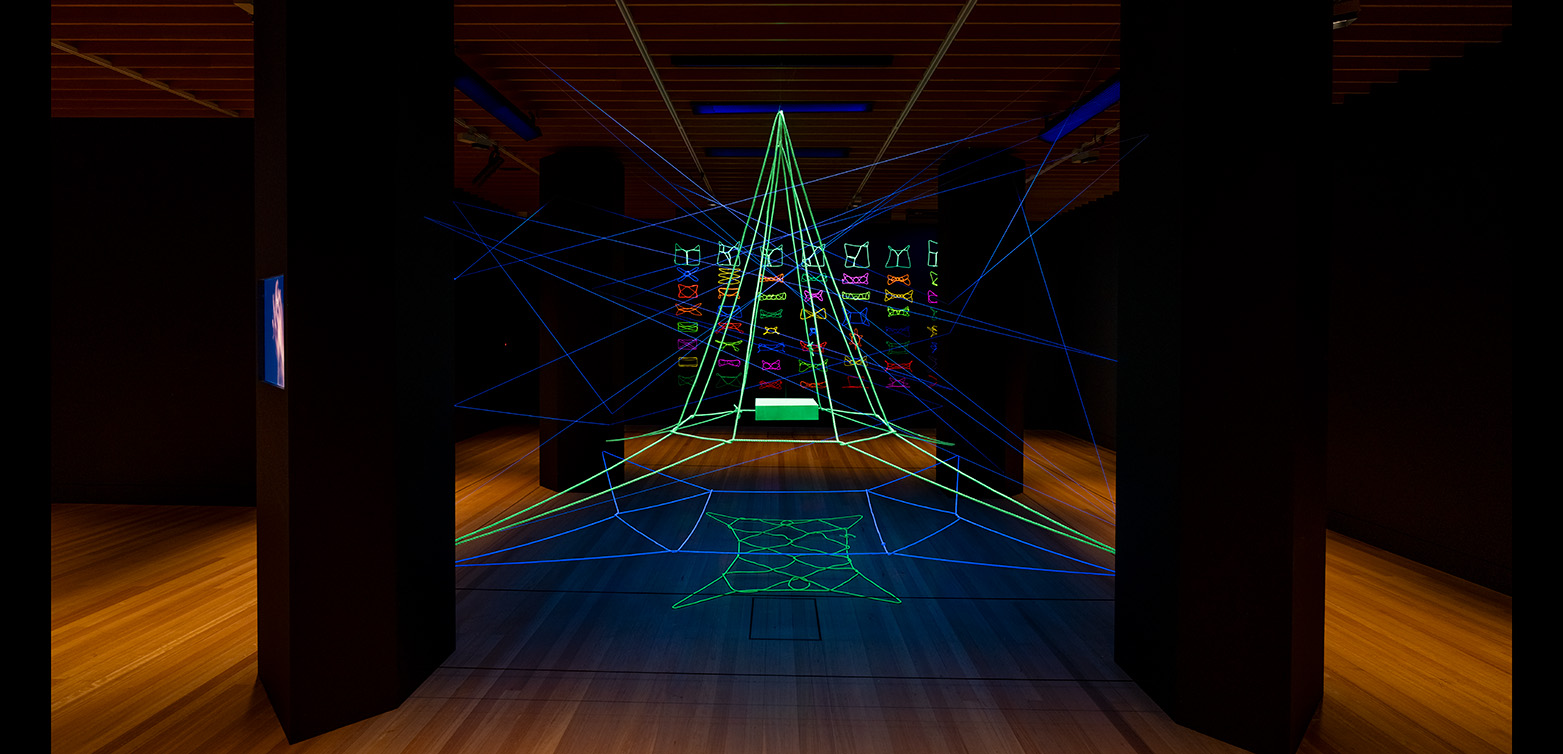 Ata Huna, Ata Whai | Threads of Connection
Ata Huna, Ata Whai | Threads of ConnectionFrom dazzling UV-light installations to delicate work in harakeke, experience the art of Maureen Lander (Ngāpuhi, Te Hikutu, Pākehā). Lander is one of News Zealand's foremost expert on raranga and a master weaver herself.
📸 Maarten Holl.
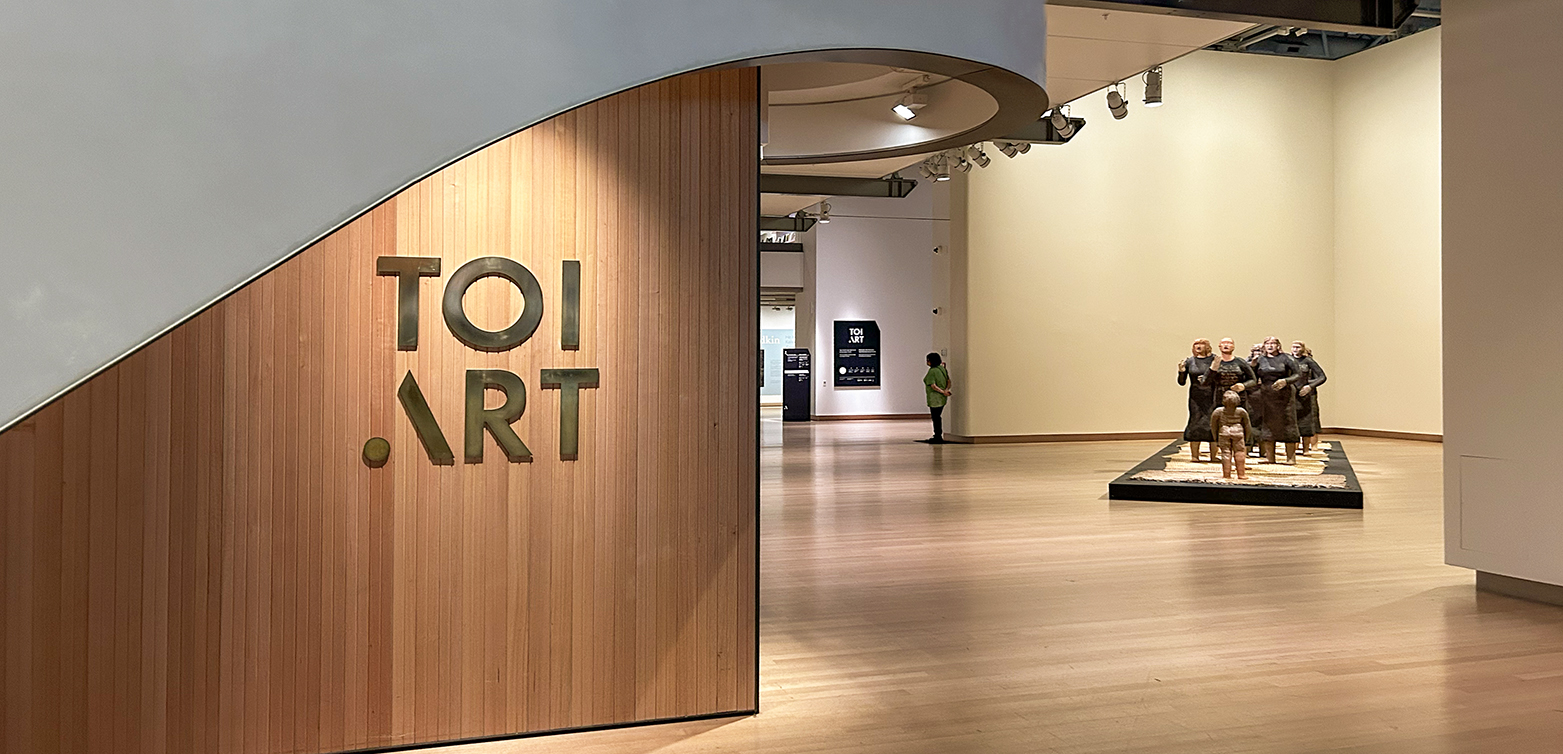 Tētēkura
TētēkuraTwo monumental artworks - one made from burnt timber, the other from fired clay. An unmissable opportunity to encounter two icons of contemporary Māori art.
📸 Jane Harris. Te Papa
 Whāia te Taniwha
Whāia te TaniwhaThis exhibition celebrates the diversity of taniwha. They are shapeshifters, oceanic guides, leaders, adversaries, guardians and tricksters who have left their marks on the Aotearoa landscape.
Whāia te Taniwha also responds to the impact of colonisation on Māori knowledge systems by celebrating the deep and varied presence of taniwha within te ao Māori,” says Cull.
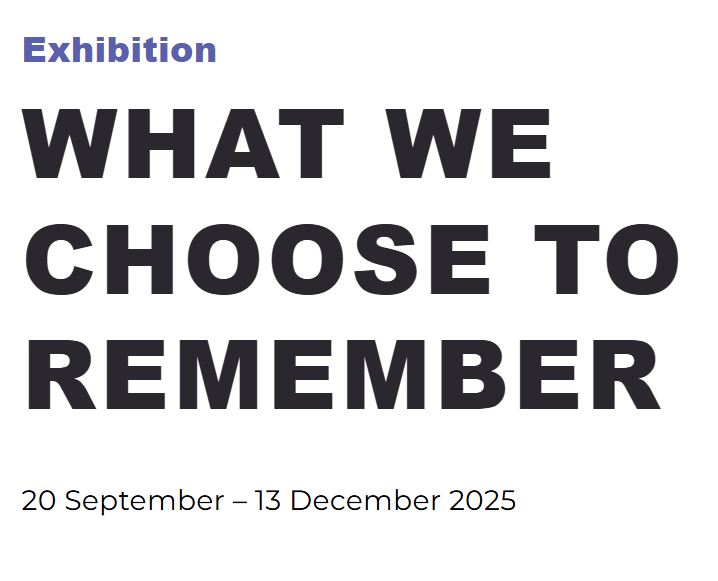 What we choose to remember
What we choose to rememberWhat we choose to remember explores ideas of nation building to consider how knowledge of significant historic events is mythologised and passed down over time. Often informed by a personal story, memory or experience, the four artists in the exhibition address major conflicts and upheavals pertinent to their own nation’s identities.
 Waiora
Waiora In this solo exhibition, Hemi Macgregor explores the spiritual elements that connect humans to the external worlds of te taiao, te taimoana, te taiwhenua and into tātai tuarangi (the cosmos). Working across painting, sculpture and installation, Macgregor draws on geometric structures, patterns and processes found in raranga, tukutuku and taniko. Pūrākau are referenced throughout the exhibition to reflect our connection with the sky, water, earth, and seasons.
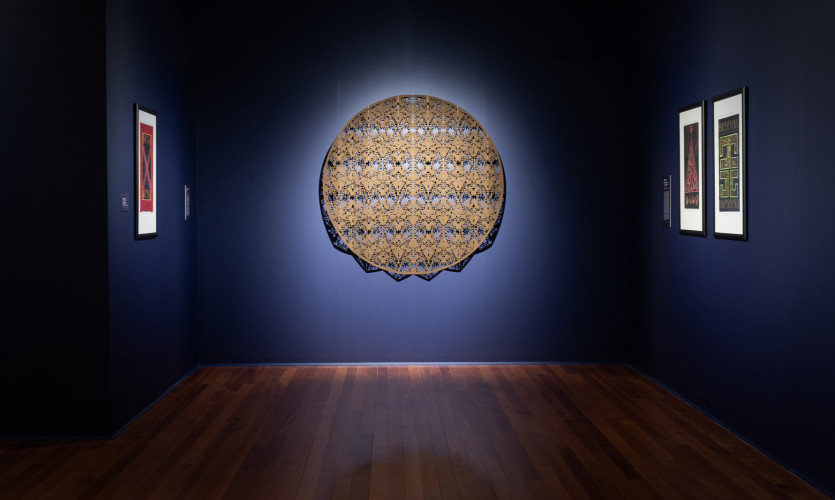 Paradise of Imagination
Paradise of ImaginationThe art, stories, and histories of the Middle Ages conjure imaginative medieval realms where fantasy fuses with memory and experience. This period covers approximately 1000 years from the decline of the Western Roman Empire in the sixth century to the early years of the sixteenth century (c.500-c.1500). Paradise of Imagination: Medieval & Modern Encounters invites us to consider the vibrant cultural legacies of the Middle Ages expressed and shaped through artists’ hands.
Paradise of Imagination: Medieval & Modern Encounters is curated by Anya Samarasinghe, Dunedin Public Art Gallery Ihupukutaka Kairaupī Curatorial Intern 2025, with support from Creative New Zealand Toi Aotearoa.
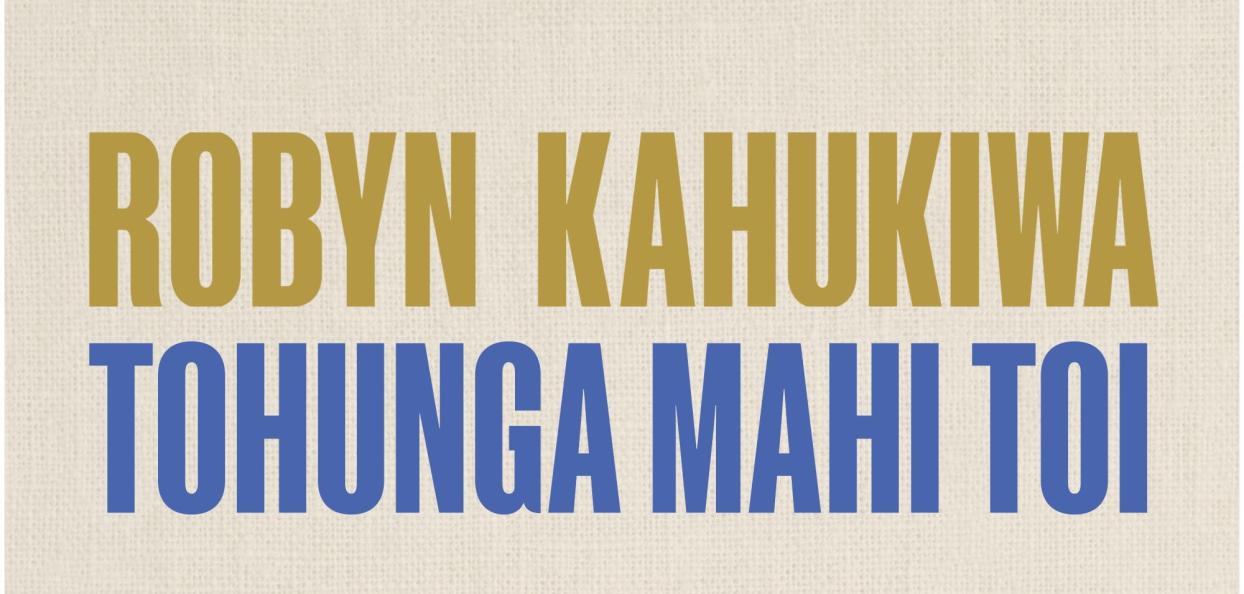 Robyn Kahukiwa: Tohunga Mahi Toi
Robyn Kahukiwa: Tohunga Mahi Toi"Robyn Kahukiwa’s artworks have made a difference to Māori. They have provided not only beauty and strength but inroads into our mātauranga, and the multi-layered, inter-generational and ever-evolving stories that are part of our cultural landscape.
Robyn’s work takes us on circular routes through time, with Māori accounts given proper currency and weight. Her work has become an alternate visual rendering of Aotearoa’s history, through the lens of a Māori woman." Roma Pōtiki
Curated by Roma Pōtiki, Te Aupōuri, Te Rarawa, Te Manawa Museum of Art, Science and Heritage.
 Living Archives
Living ArchivesDelving into art and archives from the Christchurch Art Gallery Te Puna o Waiwhetū collections, Living Archives charts personal stories about artists and history in Aotearoa. By drawing on the legacy of art historians Jonathan Mane-Wheoki, Julie King and Karen Stevenson, the exhibition focuses on intergenerational relationships, artistic lineage and creative networks.
Image: Lonnie Hutchinson (Ngāti Kuri, Ngāi Tahu, Sāmoan, Māori, Pasifika, Scottish, English)
Comb (black), 2011, Paint on steel, Karen Stevenson Collection, presented 2022
 Ahi Kaa
Ahi Kaa
Nau mai, haere mai ki te Ahi Kaa with Ngā Kaihanga Uku & Friends, a celebration of clay, fire, and the enduring spirit of Barry Brickell at Driving Creek.1–9 November 2025 (opening showcase).
The exhibition continues through summer,November 2025 – February 2026
 Does the flower hear the bee?: 15th Shanghai Biennale
Does the flower hear the bee?: 15th Shanghai Biennale 15th Shanghai Biennale: Does the flower hear the bee? takes place from 8 November 2025 to 31 March 2026 at the Power Station of Art, 200 Hua Yuan Gang Lu, Huangpu Qu, Shanghai, China.
Titled Does the flower hear the bee?, the 15th Shanghai Biennale will explore new modes of sensorial communication between artwork, audience and environment. Inspired by recent scientific discoveries regarding interactions between honeybees and the flowers that “hear” the vibration of their wings, the exhibition operates at the intersection of differing models of intelligence, both human and nonhuman.
Featuring over 250 works by 67 individual artists and collectives, from China and around the world, the Biennale’s hopeful vision rests on art’s ability to orient us towards the unknown, the future. Conceived in collaboration with a global array of artists, curators, intellectuals, musicians, poets, scientists and writers, Does the flower hear the bee? recognizes that much depends on our ability to sense the world around us and attune ourselves to its diverse variety of intelligences.
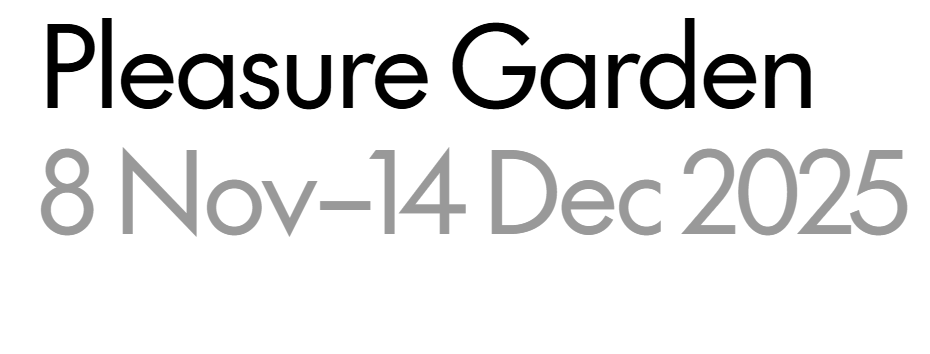 Pleasure Garden
Pleasure GardenŌtautahi Christchurch’s title of the ‘garden city’ (held proudly for over 100 years) makes it the perfect location to explore the garden as a source of creativity, experimentation, communion, and nourishment.
Through a host of objects made in reverence to the natural world, Pleasure Garden explores the joys of being outside, whether within the manicured constraints of prim courtyards, hand-tended market gardens, or overgrown and rambling backyards. Gardens tell us much about people’s relationships to place and nature, and give us opportunities to cultivate intimate connections with our immediate environments.
 Rawe!
Rawe! A vibrant collection of artists working across diverse media, including paint, moving image, sculpture, textiles, augmented reality and contemporary jewellery.
 Art of the Pacific
Art of the PacificNGV INTERNATIONAL
180 St Kilda Road, Melbourne
This display brings together works by artists and designers from Polynesia, Micronesia and Melanesia (including the Torres Strait). Spanning diverse periods, places and media – including photography, printmaking, painting, sculpture, video, fashion, tapa and lei – these works explore both contemporary innovation and the preservation of customary cultural practices. Seen together, these works highlight the vitality of art from the Pacific, and its role as a powerful vehicle for storytelling, ceremony, resistance and the transmission of culture across generations.
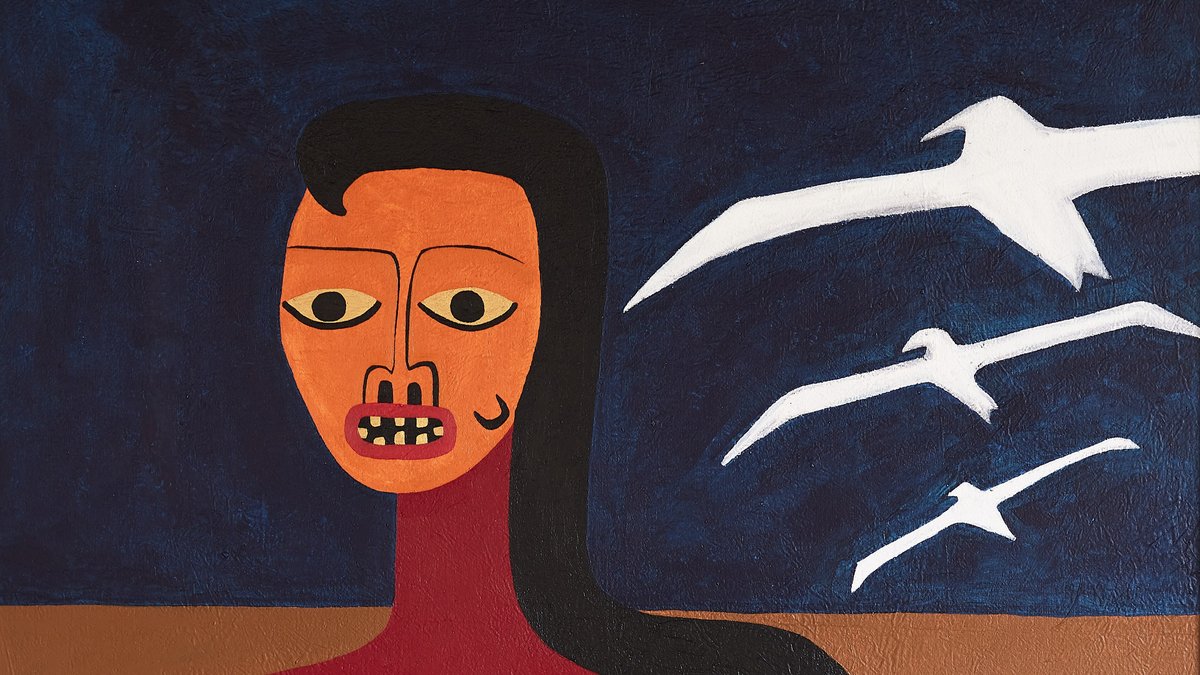 whai wāhi
whai wāhiAn exhibition spanning from the 1970s to today, Whai Wāhi brings together sculpture, photography, painting, installation, and moving image to explore voices of mana motuhake, resistance, and reflection on Te Tiriti. The works assert Māori agency and invite ongoing dialogue about Aotearoa’s shared colonial history and the pursuit of space and sovereignty.
Image: Melanie Tangaere Baldwin, Matekite (2023)
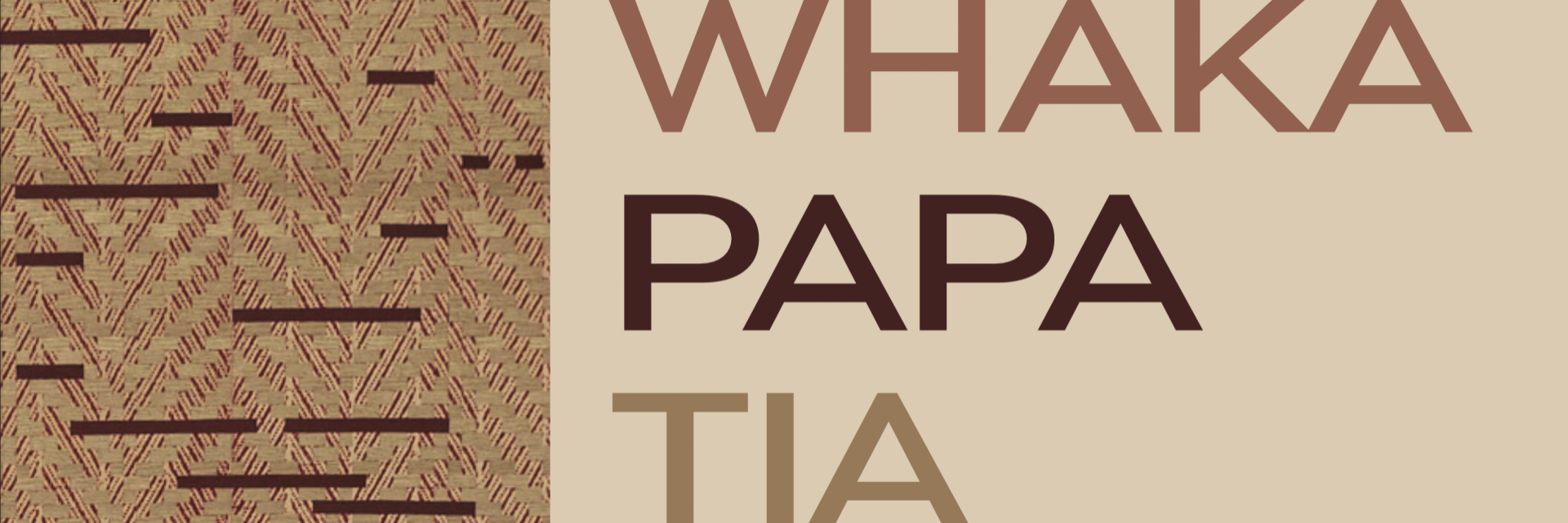 Whakapapa Tia
Whakapapa TiaStep into a world of light, lineage, and legacy as the Toi Whakaata Māori Print Collective brings its rich printmaking tradition to Hihiaua Cultural Centre. This much-anticipated exhibition showcases the work of Māori printmakers whose art reveals stories of whakapapa, whenua, and wānanga — images born from the matrix of plate and paper, where each print is a gentle unveiling of memory and identity.
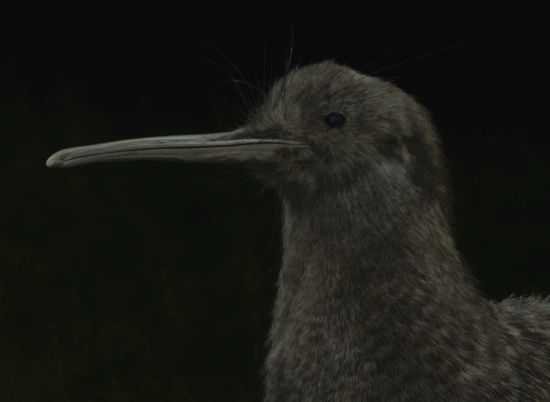 TIKI: Adrift between worlds
TIKI: Adrift between worlds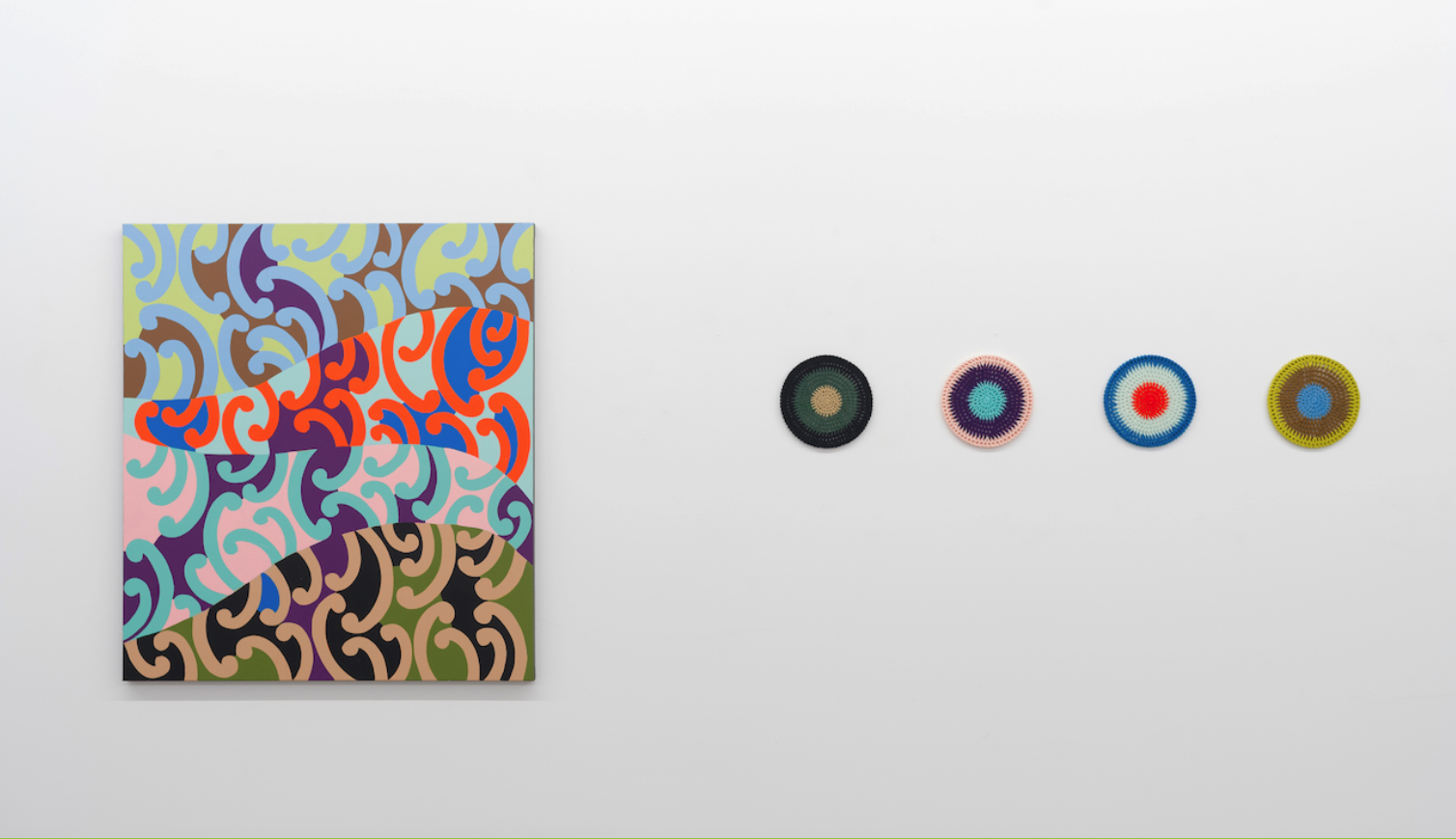 Ngā Tae Whatu
Ngā Tae WhatuNgā Tae Whatu – Woven Dreams brings together the practices of Nephi Tupaea (Ngāti Koata, Ngāti Tiipa, Ngāti Koroki Kahukura, Ngati Kahungunu) and Ani O’Neill (Cook Island Ngāti Makea, Ngāti Te Tika). Both artists are members of the Pacific Sisters, an artist collective established in Auckland in 1992, and who have described themselves as being “like the Polynesian version of Andy Warhol’s factory – an ever-evolving collective of artists coming together to create art, music, fashion, and film.”
backlitled.jpg) Strands
StrandsAmbiguous states of being and mutable identity, where the past, present and future sit together while being interrogated, are but some of the ‘strands’ interconnecting the works of Ralph Hotere, Lisa Reihana and Heidi Brickell.
Image: Ralph Hotere Winter Solstice (1988) stained glass in wooden window frame, frame: 1175 x 985 x 42 mm
 Acid Bath House
Acid Bath HouseAcid Bath House, curated by Jarrett Earnest at Nina Johnson, Miami, Florida, USA
Image Reuben Paterson, Avoiding Ordinary Boys (Constellation Pavo), 2024. Glitter, Pacific pearls, Japanese fresh water pearls, acrylic and jewelry wire and mixed media on board, 16 x 12 in. Photograph by Henry Hargreaves
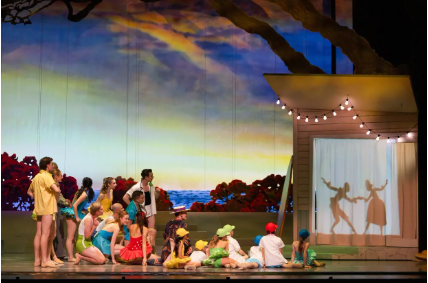 The Nutcracker
The Nutcracker Held at Kiri Te Kanawa Theatre Tāmaki Makaurau | Auckland
Central to Christmas memories for generations of audiences, The Nutcracker is a timeless celebration of family, fantasy and growing up, where ‘home for Christmas’ is the most powerful magic of all.
A uniquely Kiwi touch transports our audiences to the nostalgia of childhood holidays at the beach in Act I, before being carried in Act II to the snowy Southern Alps, where we encounter a fairytale Kingdom of the Sweets – some of which may look quite familiar…
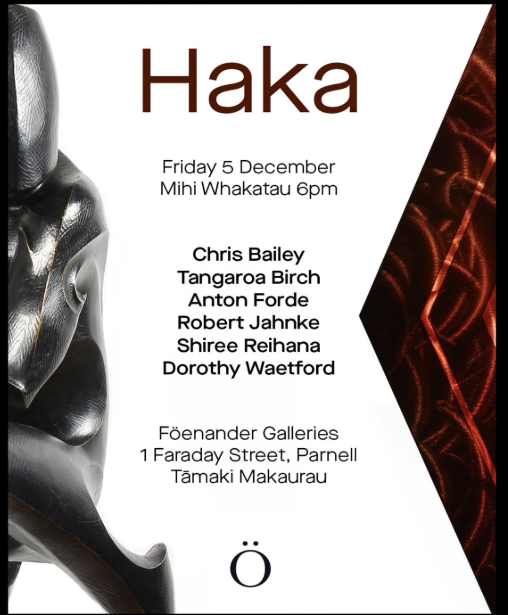 Haka
HakaGroup show
 The tongue to them
The tongue to themThese artworks from Aotearoa, Malaysia and the Philippines all emerge from a shared family of Austronesian languages to articulate experiences of colonial impact from the distinct vantage points of the region. In this exhibition, collectivity and language are considered tools for resistance. If language shapes how meaning is made, what conversations can be had between groups who share a root tongue?
 Kia Ngāwari
Kia NgāwariKia Ngāwari is a group exhibition featuring works by Steve Gibbs, Ihipera Monowai Whakataka, Maia Gibbs, Jean Johnston, Gary Underdown, Michelle Kerr, Teressa Matthews, Rina Kerekere, Torri
Stewart, Rangituhia Hollis, Tai Kerekere and Melanie Tahata.
Calling in all the favours, Melanie Tahata gathers together eleven working artists for an easy and gentle end to the calendar year. Kia Ngāwari is a group exhibition that prepares for the eventual arrival of Hineraumati and the busy summer season on the East Coast.
 Katohia He Wai Moou, Katohia He Wai Mooku
Katohia He Wai Moou, Katohia He Wai MookuPresented alongside the survey exhibition Fred Graham: Toi Whakaata / Reflections, this exhibition provides a focused, in-depth look at Graham’s body of work made about the Waikato River.
This exhibition features a series of works that trace significant places and historic sites along the Waikato awa. Rich with symbolism, the exhibition tracks the length of Aotearoa New Zealand’s largest river from its beginnings at Mount Ruapehu to the powerful currents rushing past the Museum, and onwards to the sea at Te Puuaha o Waikato (Port Waikato).
Image: Fred Graham, Te Puaaha o Waikato (Port Waikato), kauri, swamp kauri, paua shell, custom wood, 2012. Courtesy of the Waikato River Authority.
 Toi Whakaata / Reflections
Toi Whakaata / ReflectionsReflecting on Fred Graham’s art practice of over 70 years, this exhibition includes significant works made between 1965 and 2013, with an emphasis on the artist’s small-scale freestanding sculptures and relief works. The exhibited pieces demonstrate the development of Graham’s distinctive visual language, which intersects Māori and European art traditions and combines wood, stone and stainless steel.
Image: Fred Graham, Toi Whaakata / Reflections, installation view, Te Uru, 2024, courtesy of the artist and Te Uru. Photo by Samuel Hartnett.
 Pūngao
PūngaoTapac Theatre 1pm & 7pm
“What does it mean to be boldly resilient in these troubling times? How to meet with the possibility of stepping beyond the edge of personal comfort? How do we effectively use our voices, to decolonise, to regather spiritually, to confront ourselves?” - Tiaki Kerei
Pūngao by Whakamana Creatives, is a visionary process of raw movement material set to an improvisational score developed by Tiaki Kerei and dancers and produced in collaboration with Mitra Khaleghian.
Contemporary dancers Kerei, Celeste Dillon, Jasmin Canuel and Rosey Feltham energise the potential of their whakapapa; opening, grounding, releasing, restoring, building, declaring, discovering and informing their embodiment through multiple relationships and perspectives. Voyaging across ancestral landscapes, dance lineages, reclaiming language and mana, Pūngao is imbued by ihi, wehi and wana of the dancers that unravel, reveal and unpack time and space through this radical freestyle embodiment viewable on three sides of an experimental grey atea, Te Punga o Te Waka o Maui (the anchor stone).
 Step into WOW: Kōrero with Karl Chitham for Toi Māori Creatives
Step into WOW: Kōrero with Karl Chitham for Toi Māori CreativesOn behalf of the World of WearableArt (WOW), join Karl Chitham, co-judge of the WOW Toi Rakei Award, for a relaxed kōrero and kai.
This is a wonderful opportunity for artists, makers, and toi mahi across all disciplines to hear behind-the-scenes insights into this globally recognised creative platform and learn about exciting new developments for toi Māori artists in the 2026 WOW Competition.
 The Nutcracker
The Nutcracker Held at Regent on Broadway Te Papa-i-Oea | Palmerston North
Central to Christmas memories for generations of audiences, The Nutcracker is a timeless celebration of family, fantasy and growing up, where ‘home for Christmas’ is the most powerful magic of all.
A uniquely Kiwi touch transports our audiences to the nostalgia of childhood holidays at the beach in Act I, before being carried in Act II to the snowy Southern Alps, where we encounter a fairytale Kingdom of the Sweets – some of which may look quite familiar…
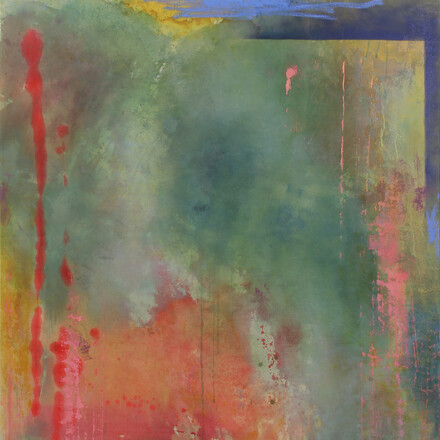 The Whakatipu Chronicle
The Whakatipu ChronicleFeaturing
Image: Amanda Gruenwald
 Manu Taki
Manu Taki After the undercurrents
After the undercurrentsAfter the undercurrents
Gordon Bennett,Emily Karaka
31 January – 11April 2026
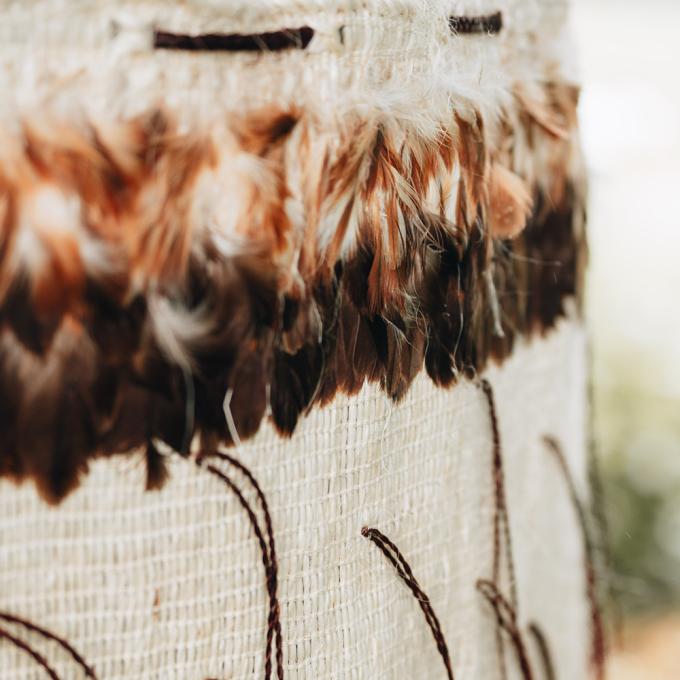 Aupiki
AupikiManaia Carswell's first solo exhibition 'Aupiki', explores different aspects of herself, her whakapapa and what it means to be māori today.
Using muka, harakeke and the Māori art of weaving raranga and whatu, she will create installations that will offer up a different perspective.
 He Kapuka Oneone – A Handful of Soil
He Kapuka Oneone – A Handful of SoilExploring the relationship between tākata and whenua – people and land – through Aotearoa New Zealand’s art history.
This expansive and unmissable exhibition explores the fundamental role whenua plays in the visual language and identity of Aotearoa. Acknowledging Māori as takata whenua, the first peoples to call this land home, themes of kaitiakitaka, colonisation, environmentalism, land use, migration, identity and belonging are considered through collection works, new acquisitions and exciting commissions.
 Huikaau | where currents meet
Huikaau | where currents meetHuikaau – where currents meet celebrates the past, present, and future of the Dunedin Public Art Gallery collection – Aotearoa’s first civic collection of art, which was established in Ōtepoti Dunedin in 1884. This exhibition upholds the stories and ideas carried within the collection, welcomes new arrivals, and continues to work in partnership to bring Māori and indigenous perspectives to the fore.
 Te Paparahi Toi Māori
Te Paparahi Toi Māori‘Te Paparahi Toi Māori’ the Auckland Art Walk guide, which brings Māori culture and history to life in the city’s public spaces for Aucklanders and tourists to explore.
 Mataaho Collective
Mataaho Collective Hautāmiro (2025) is an installation by Mataaho Collective, which is led by the ancestral narratives of Tokohurunuku, Tokohururangi, Tokohurumawake and Tokohuruatea, the four winds, or the pillars of the sky. The four were children of Huruteaarangi, an atua of the winds who sent her offspring to the edges of the sky to stand as pou that separated Ranginui and Papatūānuku. Inspired by the dynamic visual language of hukahuka whakarākei, the adornments of customary kākahu, Hautāmiro weaves together materials and techniques in an installation that celebrates adaptation, experimentation and mātauranga Māori across generations.
.jpg) Taimoana | Coastlines: Art in Aotearoa
Taimoana | Coastlines: Art in AotearoaTaimoana | Coastlines explores the art of Aotearoa New Zealand, locating it within Te Moana-nui-a-Kiwa, the wider Pacific region. Taking the concept of the coast, or shoreline, as a starting point, the exhibition navigates a sea of ideas, offering multiple perspectives on New Zealand art through a selection of works from the collection of Auckland Art Gallery Toi o Tāmaki.
 Ata Huna, Ata Whai | Threads of Connection
Ata Huna, Ata Whai | Threads of ConnectionFrom dazzling UV-light installations to delicate work in harakeke, experience the art of Maureen Lander (Ngāpuhi, Te Hikutu, Pākehā). Lander is one of News Zealand's foremost expert on raranga and a master weaver herself.
📸 Maarten Holl.
 Tētēkura
TētēkuraTwo monumental artworks - one made from burnt timber, the other from fired clay. An unmissable opportunity to encounter two icons of contemporary Māori art.
📸 Jane Harris. Te Papa
 Whāia te Taniwha
Whāia te TaniwhaThis exhibition celebrates the diversity of taniwha. They are shapeshifters, oceanic guides, leaders, adversaries, guardians and tricksters who have left their marks on the Aotearoa landscape.
Whāia te Taniwha also responds to the impact of colonisation on Māori knowledge systems by celebrating the deep and varied presence of taniwha within te ao Māori,” says Cull.
 What we choose to remember
What we choose to rememberWhat we choose to remember explores ideas of nation building to consider how knowledge of significant historic events is mythologised and passed down over time. Often informed by a personal story, memory or experience, the four artists in the exhibition address major conflicts and upheavals pertinent to their own nation’s identities.
 Waiora
Waiora In this solo exhibition, Hemi Macgregor explores the spiritual elements that connect humans to the external worlds of te taiao, te taimoana, te taiwhenua and into tātai tuarangi (the cosmos). Working across painting, sculpture and installation, Macgregor draws on geometric structures, patterns and processes found in raranga, tukutuku and taniko. Pūrākau are referenced throughout the exhibition to reflect our connection with the sky, water, earth, and seasons.
 Paradise of Imagination
Paradise of ImaginationThe art, stories, and histories of the Middle Ages conjure imaginative medieval realms where fantasy fuses with memory and experience. This period covers approximately 1000 years from the decline of the Western Roman Empire in the sixth century to the early years of the sixteenth century (c.500-c.1500). Paradise of Imagination: Medieval & Modern Encounters invites us to consider the vibrant cultural legacies of the Middle Ages expressed and shaped through artists’ hands.
Paradise of Imagination: Medieval & Modern Encounters is curated by Anya Samarasinghe, Dunedin Public Art Gallery Ihupukutaka Kairaupī Curatorial Intern 2025, with support from Creative New Zealand Toi Aotearoa.
 Robyn Kahukiwa: Tohunga Mahi Toi
Robyn Kahukiwa: Tohunga Mahi Toi"Robyn Kahukiwa’s artworks have made a difference to Māori. They have provided not only beauty and strength but inroads into our mātauranga, and the multi-layered, inter-generational and ever-evolving stories that are part of our cultural landscape.
Robyn’s work takes us on circular routes through time, with Māori accounts given proper currency and weight. Her work has become an alternate visual rendering of Aotearoa’s history, through the lens of a Māori woman." Roma Pōtiki
Curated by Roma Pōtiki, Te Aupōuri, Te Rarawa, Te Manawa Museum of Art, Science and Heritage.
 Living Archives
Living ArchivesDelving into art and archives from the Christchurch Art Gallery Te Puna o Waiwhetū collections, Living Archives charts personal stories about artists and history in Aotearoa. By drawing on the legacy of art historians Jonathan Mane-Wheoki, Julie King and Karen Stevenson, the exhibition focuses on intergenerational relationships, artistic lineage and creative networks.
Image: Lonnie Hutchinson (Ngāti Kuri, Ngāi Tahu, Sāmoan, Māori, Pasifika, Scottish, English)
Comb (black), 2011, Paint on steel, Karen Stevenson Collection, presented 2022
 Ahi Kaa
Ahi Kaa
Nau mai, haere mai ki te Ahi Kaa with Ngā Kaihanga Uku & Friends, a celebration of clay, fire, and the enduring spirit of Barry Brickell at Driving Creek.1–9 November 2025 (opening showcase).
The exhibition continues through summer,November 2025 – February 2026
 Does the flower hear the bee?: 15th Shanghai Biennale
Does the flower hear the bee?: 15th Shanghai Biennale 15th Shanghai Biennale: Does the flower hear the bee? takes place from 8 November 2025 to 31 March 2026 at the Power Station of Art, 200 Hua Yuan Gang Lu, Huangpu Qu, Shanghai, China.
Titled Does the flower hear the bee?, the 15th Shanghai Biennale will explore new modes of sensorial communication between artwork, audience and environment. Inspired by recent scientific discoveries regarding interactions between honeybees and the flowers that “hear” the vibration of their wings, the exhibition operates at the intersection of differing models of intelligence, both human and nonhuman.
Featuring over 250 works by 67 individual artists and collectives, from China and around the world, the Biennale’s hopeful vision rests on art’s ability to orient us towards the unknown, the future. Conceived in collaboration with a global array of artists, curators, intellectuals, musicians, poets, scientists and writers, Does the flower hear the bee? recognizes that much depends on our ability to sense the world around us and attune ourselves to its diverse variety of intelligences.
 Pleasure Garden
Pleasure GardenŌtautahi Christchurch’s title of the ‘garden city’ (held proudly for over 100 years) makes it the perfect location to explore the garden as a source of creativity, experimentation, communion, and nourishment.
Through a host of objects made in reverence to the natural world, Pleasure Garden explores the joys of being outside, whether within the manicured constraints of prim courtyards, hand-tended market gardens, or overgrown and rambling backyards. Gardens tell us much about people’s relationships to place and nature, and give us opportunities to cultivate intimate connections with our immediate environments.
 Rawe!
Rawe! A vibrant collection of artists working across diverse media, including paint, moving image, sculpture, textiles, augmented reality and contemporary jewellery.
 Art of the Pacific
Art of the PacificNGV INTERNATIONAL
180 St Kilda Road, Melbourne
This display brings together works by artists and designers from Polynesia, Micronesia and Melanesia (including the Torres Strait). Spanning diverse periods, places and media – including photography, printmaking, painting, sculpture, video, fashion, tapa and lei – these works explore both contemporary innovation and the preservation of customary cultural practices. Seen together, these works highlight the vitality of art from the Pacific, and its role as a powerful vehicle for storytelling, ceremony, resistance and the transmission of culture across generations.
 whai wāhi
whai wāhiAn exhibition spanning from the 1970s to today, Whai Wāhi brings together sculpture, photography, painting, installation, and moving image to explore voices of mana motuhake, resistance, and reflection on Te Tiriti. The works assert Māori agency and invite ongoing dialogue about Aotearoa’s shared colonial history and the pursuit of space and sovereignty.
Image: Melanie Tangaere Baldwin, Matekite (2023)
 Whakapapa Tia
Whakapapa TiaStep into a world of light, lineage, and legacy as the Toi Whakaata Māori Print Collective brings its rich printmaking tradition to Hihiaua Cultural Centre. This much-anticipated exhibition showcases the work of Māori printmakers whose art reveals stories of whakapapa, whenua, and wānanga — images born from the matrix of plate and paper, where each print is a gentle unveiling of memory and identity.
 TIKI: Adrift between worlds
TIKI: Adrift between worlds Ngā Tae Whatu
Ngā Tae WhatuNgā Tae Whatu – Woven Dreams brings together the practices of Nephi Tupaea (Ngāti Koata, Ngāti Tiipa, Ngāti Koroki Kahukura, Ngati Kahungunu) and Ani O’Neill (Cook Island Ngāti Makea, Ngāti Te Tika). Both artists are members of the Pacific Sisters, an artist collective established in Auckland in 1992, and who have described themselves as being “like the Polynesian version of Andy Warhol’s factory – an ever-evolving collective of artists coming together to create art, music, fashion, and film.”
backlitled.jpg) Strands
StrandsAmbiguous states of being and mutable identity, where the past, present and future sit together while being interrogated, are but some of the ‘strands’ interconnecting the works of Ralph Hotere, Lisa Reihana and Heidi Brickell.
Image: Ralph Hotere Winter Solstice (1988) stained glass in wooden window frame, frame: 1175 x 985 x 42 mm
 Acid Bath House
Acid Bath HouseAcid Bath House, curated by Jarrett Earnest at Nina Johnson, Miami, Florida, USA
Image Reuben Paterson, Avoiding Ordinary Boys (Constellation Pavo), 2024. Glitter, Pacific pearls, Japanese fresh water pearls, acrylic and jewelry wire and mixed media on board, 16 x 12 in. Photograph by Henry Hargreaves
 The Nutcracker
The Nutcracker Held at Kiri Te Kanawa Theatre Tāmaki Makaurau | Auckland
Central to Christmas memories for generations of audiences, The Nutcracker is a timeless celebration of family, fantasy and growing up, where ‘home for Christmas’ is the most powerful magic of all.
A uniquely Kiwi touch transports our audiences to the nostalgia of childhood holidays at the beach in Act I, before being carried in Act II to the snowy Southern Alps, where we encounter a fairytale Kingdom of the Sweets – some of which may look quite familiar…
 Haka
HakaGroup show
 The tongue to them
The tongue to themThese artworks from Aotearoa, Malaysia and the Philippines all emerge from a shared family of Austronesian languages to articulate experiences of colonial impact from the distinct vantage points of the region. In this exhibition, collectivity and language are considered tools for resistance. If language shapes how meaning is made, what conversations can be had between groups who share a root tongue?
 Kia Ngāwari
Kia NgāwariKia Ngāwari is a group exhibition featuring works by Steve Gibbs, Ihipera Monowai Whakataka, Maia Gibbs, Jean Johnston, Gary Underdown, Michelle Kerr, Teressa Matthews, Rina Kerekere, Torri
Stewart, Rangituhia Hollis, Tai Kerekere and Melanie Tahata.
Calling in all the favours, Melanie Tahata gathers together eleven working artists for an easy and gentle end to the calendar year. Kia Ngāwari is a group exhibition that prepares for the eventual arrival of Hineraumati and the busy summer season on the East Coast.
 Katohia He Wai Moou, Katohia He Wai Mooku
Katohia He Wai Moou, Katohia He Wai MookuPresented alongside the survey exhibition Fred Graham: Toi Whakaata / Reflections, this exhibition provides a focused, in-depth look at Graham’s body of work made about the Waikato River.
This exhibition features a series of works that trace significant places and historic sites along the Waikato awa. Rich with symbolism, the exhibition tracks the length of Aotearoa New Zealand’s largest river from its beginnings at Mount Ruapehu to the powerful currents rushing past the Museum, and onwards to the sea at Te Puuaha o Waikato (Port Waikato).
Image: Fred Graham, Te Puaaha o Waikato (Port Waikato), kauri, swamp kauri, paua shell, custom wood, 2012. Courtesy of the Waikato River Authority.
 Toi Whakaata / Reflections
Toi Whakaata / ReflectionsReflecting on Fred Graham’s art practice of over 70 years, this exhibition includes significant works made between 1965 and 2013, with an emphasis on the artist’s small-scale freestanding sculptures and relief works. The exhibited pieces demonstrate the development of Graham’s distinctive visual language, which intersects Māori and European art traditions and combines wood, stone and stainless steel.
Image: Fred Graham, Toi Whaakata / Reflections, installation view, Te Uru, 2024, courtesy of the artist and Te Uru. Photo by Samuel Hartnett.
 Pūngao
PūngaoTapac Theatre 1pm & 7pm
“What does it mean to be boldly resilient in these troubling times? How to meet with the possibility of stepping beyond the edge of personal comfort? How do we effectively use our voices, to decolonise, to regather spiritually, to confront ourselves?” - Tiaki Kerei
Pūngao by Whakamana Creatives, is a visionary process of raw movement material set to an improvisational score developed by Tiaki Kerei and dancers and produced in collaboration with Mitra Khaleghian.
Contemporary dancers Kerei, Celeste Dillon, Jasmin Canuel and Rosey Feltham energise the potential of their whakapapa; opening, grounding, releasing, restoring, building, declaring, discovering and informing their embodiment through multiple relationships and perspectives. Voyaging across ancestral landscapes, dance lineages, reclaiming language and mana, Pūngao is imbued by ihi, wehi and wana of the dancers that unravel, reveal and unpack time and space through this radical freestyle embodiment viewable on three sides of an experimental grey atea, Te Punga o Te Waka o Maui (the anchor stone).
 Step into WOW: Kōrero with Karl Chitham for Toi Māori Creatives
Step into WOW: Kōrero with Karl Chitham for Toi Māori CreativesOn behalf of the World of WearableArt (WOW), join Karl Chitham, co-judge of the WOW Toi Rakei Award, for a relaxed kōrero and kai.
This is a wonderful opportunity for artists, makers, and toi mahi across all disciplines to hear behind-the-scenes insights into this globally recognised creative platform and learn about exciting new developments for toi Māori artists in the 2026 WOW Competition.
 The Nutcracker
The Nutcracker Held at Regent on Broadway Te Papa-i-Oea | Palmerston North
Central to Christmas memories for generations of audiences, The Nutcracker is a timeless celebration of family, fantasy and growing up, where ‘home for Christmas’ is the most powerful magic of all.
A uniquely Kiwi touch transports our audiences to the nostalgia of childhood holidays at the beach in Act I, before being carried in Act II to the snowy Southern Alps, where we encounter a fairytale Kingdom of the Sweets – some of which may look quite familiar…
 The Whakatipu Chronicle
The Whakatipu ChronicleFeaturing
Image: Amanda Gruenwald
 Manu Taki
Manu Taki After the undercurrents
After the undercurrentsAfter the undercurrents
Gordon Bennett,Emily Karaka
31 January – 11April 2026
 Aupiki
AupikiManaia Carswell's first solo exhibition 'Aupiki', explores different aspects of herself, her whakapapa and what it means to be māori today.
Using muka, harakeke and the Māori art of weaving raranga and whatu, she will create installations that will offer up a different perspective.
 He Kapuka Oneone – A Handful of Soil
He Kapuka Oneone – A Handful of SoilExploring the relationship between tākata and whenua – people and land – through Aotearoa New Zealand’s art history.
This expansive and unmissable exhibition explores the fundamental role whenua plays in the visual language and identity of Aotearoa. Acknowledging Māori as takata whenua, the first peoples to call this land home, themes of kaitiakitaka, colonisation, environmentalism, land use, migration, identity and belonging are considered through collection works, new acquisitions and exciting commissions.
 Huikaau | where currents meet
Huikaau | where currents meetHuikaau – where currents meet celebrates the past, present, and future of the Dunedin Public Art Gallery collection – Aotearoa’s first civic collection of art, which was established in Ōtepoti Dunedin in 1884. This exhibition upholds the stories and ideas carried within the collection, welcomes new arrivals, and continues to work in partnership to bring Māori and indigenous perspectives to the fore.
 Te Paparahi Toi Māori
Te Paparahi Toi Māori‘Te Paparahi Toi Māori’ the Auckland Art Walk guide, which brings Māori culture and history to life in the city’s public spaces for Aucklanders and tourists to explore.
 Mataaho Collective
Mataaho Collective Hautāmiro (2025) is an installation by Mataaho Collective, which is led by the ancestral narratives of Tokohurunuku, Tokohururangi, Tokohurumawake and Tokohuruatea, the four winds, or the pillars of the sky. The four were children of Huruteaarangi, an atua of the winds who sent her offspring to the edges of the sky to stand as pou that separated Ranginui and Papatūānuku. Inspired by the dynamic visual language of hukahuka whakarākei, the adornments of customary kākahu, Hautāmiro weaves together materials and techniques in an installation that celebrates adaptation, experimentation and mātauranga Māori across generations.
.jpg) Taimoana | Coastlines: Art in Aotearoa
Taimoana | Coastlines: Art in AotearoaTaimoana | Coastlines explores the art of Aotearoa New Zealand, locating it within Te Moana-nui-a-Kiwa, the wider Pacific region. Taking the concept of the coast, or shoreline, as a starting point, the exhibition navigates a sea of ideas, offering multiple perspectives on New Zealand art through a selection of works from the collection of Auckland Art Gallery Toi o Tāmaki.
 Ata Huna, Ata Whai | Threads of Connection
Ata Huna, Ata Whai | Threads of ConnectionFrom dazzling UV-light installations to delicate work in harakeke, experience the art of Maureen Lander (Ngāpuhi, Te Hikutu, Pākehā). Lander is one of News Zealand's foremost expert on raranga and a master weaver herself.
📸 Maarten Holl.
 Tētēkura
TētēkuraTwo monumental artworks - one made from burnt timber, the other from fired clay. An unmissable opportunity to encounter two icons of contemporary Māori art.
📸 Jane Harris. Te Papa
 Whāia te Taniwha
Whāia te TaniwhaThis exhibition celebrates the diversity of taniwha. They are shapeshifters, oceanic guides, leaders, adversaries, guardians and tricksters who have left their marks on the Aotearoa landscape.
Whāia te Taniwha also responds to the impact of colonisation on Māori knowledge systems by celebrating the deep and varied presence of taniwha within te ao Māori,” says Cull.
 What we choose to remember
What we choose to rememberWhat we choose to remember explores ideas of nation building to consider how knowledge of significant historic events is mythologised and passed down over time. Often informed by a personal story, memory or experience, the four artists in the exhibition address major conflicts and upheavals pertinent to their own nation’s identities.
 Waiora
Waiora In this solo exhibition, Hemi Macgregor explores the spiritual elements that connect humans to the external worlds of te taiao, te taimoana, te taiwhenua and into tātai tuarangi (the cosmos). Working across painting, sculpture and installation, Macgregor draws on geometric structures, patterns and processes found in raranga, tukutuku and taniko. Pūrākau are referenced throughout the exhibition to reflect our connection with the sky, water, earth, and seasons.
 Paradise of Imagination
Paradise of ImaginationThe art, stories, and histories of the Middle Ages conjure imaginative medieval realms where fantasy fuses with memory and experience. This period covers approximately 1000 years from the decline of the Western Roman Empire in the sixth century to the early years of the sixteenth century (c.500-c.1500). Paradise of Imagination: Medieval & Modern Encounters invites us to consider the vibrant cultural legacies of the Middle Ages expressed and shaped through artists’ hands.
Paradise of Imagination: Medieval & Modern Encounters is curated by Anya Samarasinghe, Dunedin Public Art Gallery Ihupukutaka Kairaupī Curatorial Intern 2025, with support from Creative New Zealand Toi Aotearoa.
 Robyn Kahukiwa: Tohunga Mahi Toi
Robyn Kahukiwa: Tohunga Mahi Toi"Robyn Kahukiwa’s artworks have made a difference to Māori. They have provided not only beauty and strength but inroads into our mātauranga, and the multi-layered, inter-generational and ever-evolving stories that are part of our cultural landscape.
Robyn’s work takes us on circular routes through time, with Māori accounts given proper currency and weight. Her work has become an alternate visual rendering of Aotearoa’s history, through the lens of a Māori woman." Roma Pōtiki
Curated by Roma Pōtiki, Te Aupōuri, Te Rarawa, Te Manawa Museum of Art, Science and Heritage.
 Living Archives
Living ArchivesDelving into art and archives from the Christchurch Art Gallery Te Puna o Waiwhetū collections, Living Archives charts personal stories about artists and history in Aotearoa. By drawing on the legacy of art historians Jonathan Mane-Wheoki, Julie King and Karen Stevenson, the exhibition focuses on intergenerational relationships, artistic lineage and creative networks.
Image: Lonnie Hutchinson (Ngāti Kuri, Ngāi Tahu, Sāmoan, Māori, Pasifika, Scottish, English)
Comb (black), 2011, Paint on steel, Karen Stevenson Collection, presented 2022
 Ahi Kaa
Ahi Kaa
Nau mai, haere mai ki te Ahi Kaa with Ngā Kaihanga Uku & Friends, a celebration of clay, fire, and the enduring spirit of Barry Brickell at Driving Creek.1–9 November 2025 (opening showcase).
The exhibition continues through summer,November 2025 – February 2026
 Does the flower hear the bee?: 15th Shanghai Biennale
Does the flower hear the bee?: 15th Shanghai Biennale 15th Shanghai Biennale: Does the flower hear the bee? takes place from 8 November 2025 to 31 March 2026 at the Power Station of Art, 200 Hua Yuan Gang Lu, Huangpu Qu, Shanghai, China.
Titled Does the flower hear the bee?, the 15th Shanghai Biennale will explore new modes of sensorial communication between artwork, audience and environment. Inspired by recent scientific discoveries regarding interactions between honeybees and the flowers that “hear” the vibration of their wings, the exhibition operates at the intersection of differing models of intelligence, both human and nonhuman.
Featuring over 250 works by 67 individual artists and collectives, from China and around the world, the Biennale’s hopeful vision rests on art’s ability to orient us towards the unknown, the future. Conceived in collaboration with a global array of artists, curators, intellectuals, musicians, poets, scientists and writers, Does the flower hear the bee? recognizes that much depends on our ability to sense the world around us and attune ourselves to its diverse variety of intelligences.
 Pleasure Garden
Pleasure GardenŌtautahi Christchurch’s title of the ‘garden city’ (held proudly for over 100 years) makes it the perfect location to explore the garden as a source of creativity, experimentation, communion, and nourishment.
Through a host of objects made in reverence to the natural world, Pleasure Garden explores the joys of being outside, whether within the manicured constraints of prim courtyards, hand-tended market gardens, or overgrown and rambling backyards. Gardens tell us much about people’s relationships to place and nature, and give us opportunities to cultivate intimate connections with our immediate environments.
 Rawe!
Rawe! A vibrant collection of artists working across diverse media, including paint, moving image, sculpture, textiles, augmented reality and contemporary jewellery.
 Art of the Pacific
Art of the PacificNGV INTERNATIONAL
180 St Kilda Road, Melbourne
This display brings together works by artists and designers from Polynesia, Micronesia and Melanesia (including the Torres Strait). Spanning diverse periods, places and media – including photography, printmaking, painting, sculpture, video, fashion, tapa and lei – these works explore both contemporary innovation and the preservation of customary cultural practices. Seen together, these works highlight the vitality of art from the Pacific, and its role as a powerful vehicle for storytelling, ceremony, resistance and the transmission of culture across generations.
 whai wāhi
whai wāhiAn exhibition spanning from the 1970s to today, Whai Wāhi brings together sculpture, photography, painting, installation, and moving image to explore voices of mana motuhake, resistance, and reflection on Te Tiriti. The works assert Māori agency and invite ongoing dialogue about Aotearoa’s shared colonial history and the pursuit of space and sovereignty.
Image: Melanie Tangaere Baldwin, Matekite (2023)
 Whakapapa Tia
Whakapapa TiaStep into a world of light, lineage, and legacy as the Toi Whakaata Māori Print Collective brings its rich printmaking tradition to Hihiaua Cultural Centre. This much-anticipated exhibition showcases the work of Māori printmakers whose art reveals stories of whakapapa, whenua, and wānanga — images born from the matrix of plate and paper, where each print is a gentle unveiling of memory and identity.
 TIKI: Adrift between worlds
TIKI: Adrift between worlds Ngā Tae Whatu
Ngā Tae WhatuNgā Tae Whatu – Woven Dreams brings together the practices of Nephi Tupaea (Ngāti Koata, Ngāti Tiipa, Ngāti Koroki Kahukura, Ngati Kahungunu) and Ani O’Neill (Cook Island Ngāti Makea, Ngāti Te Tika). Both artists are members of the Pacific Sisters, an artist collective established in Auckland in 1992, and who have described themselves as being “like the Polynesian version of Andy Warhol’s factory – an ever-evolving collective of artists coming together to create art, music, fashion, and film.”
backlitled.jpg) Strands
StrandsAmbiguous states of being and mutable identity, where the past, present and future sit together while being interrogated, are but some of the ‘strands’ interconnecting the works of Ralph Hotere, Lisa Reihana and Heidi Brickell.
Image: Ralph Hotere Winter Solstice (1988) stained glass in wooden window frame, frame: 1175 x 985 x 42 mm
 Acid Bath House
Acid Bath HouseAcid Bath House, curated by Jarrett Earnest at Nina Johnson, Miami, Florida, USA
Image Reuben Paterson, Avoiding Ordinary Boys (Constellation Pavo), 2024. Glitter, Pacific pearls, Japanese fresh water pearls, acrylic and jewelry wire and mixed media on board, 16 x 12 in. Photograph by Henry Hargreaves
 The Nutcracker
The Nutcracker Held at Kiri Te Kanawa Theatre Tāmaki Makaurau | Auckland
Central to Christmas memories for generations of audiences, The Nutcracker is a timeless celebration of family, fantasy and growing up, where ‘home for Christmas’ is the most powerful magic of all.
A uniquely Kiwi touch transports our audiences to the nostalgia of childhood holidays at the beach in Act I, before being carried in Act II to the snowy Southern Alps, where we encounter a fairytale Kingdom of the Sweets – some of which may look quite familiar…
 Haka
HakaGroup show
 The tongue to them
The tongue to themThese artworks from Aotearoa, Malaysia and the Philippines all emerge from a shared family of Austronesian languages to articulate experiences of colonial impact from the distinct vantage points of the region. In this exhibition, collectivity and language are considered tools for resistance. If language shapes how meaning is made, what conversations can be had between groups who share a root tongue?
 Kia Ngāwari
Kia NgāwariKia Ngāwari is a group exhibition featuring works by Steve Gibbs, Ihipera Monowai Whakataka, Maia Gibbs, Jean Johnston, Gary Underdown, Michelle Kerr, Teressa Matthews, Rina Kerekere, Torri
Stewart, Rangituhia Hollis, Tai Kerekere and Melanie Tahata.
Calling in all the favours, Melanie Tahata gathers together eleven working artists for an easy and gentle end to the calendar year. Kia Ngāwari is a group exhibition that prepares for the eventual arrival of Hineraumati and the busy summer season on the East Coast.
 Katohia He Wai Moou, Katohia He Wai Mooku
Katohia He Wai Moou, Katohia He Wai MookuPresented alongside the survey exhibition Fred Graham: Toi Whakaata / Reflections, this exhibition provides a focused, in-depth look at Graham’s body of work made about the Waikato River.
This exhibition features a series of works that trace significant places and historic sites along the Waikato awa. Rich with symbolism, the exhibition tracks the length of Aotearoa New Zealand’s largest river from its beginnings at Mount Ruapehu to the powerful currents rushing past the Museum, and onwards to the sea at Te Puuaha o Waikato (Port Waikato).
Image: Fred Graham, Te Puaaha o Waikato (Port Waikato), kauri, swamp kauri, paua shell, custom wood, 2012. Courtesy of the Waikato River Authority.
 Toi Whakaata / Reflections
Toi Whakaata / ReflectionsReflecting on Fred Graham’s art practice of over 70 years, this exhibition includes significant works made between 1965 and 2013, with an emphasis on the artist’s small-scale freestanding sculptures and relief works. The exhibited pieces demonstrate the development of Graham’s distinctive visual language, which intersects Māori and European art traditions and combines wood, stone and stainless steel.
Image: Fred Graham, Toi Whaakata / Reflections, installation view, Te Uru, 2024, courtesy of the artist and Te Uru. Photo by Samuel Hartnett.
 Pūngao
PūngaoTapac Theatre 1pm & 7pm
“What does it mean to be boldly resilient in these troubling times? How to meet with the possibility of stepping beyond the edge of personal comfort? How do we effectively use our voices, to decolonise, to regather spiritually, to confront ourselves?” - Tiaki Kerei
Pūngao by Whakamana Creatives, is a visionary process of raw movement material set to an improvisational score developed by Tiaki Kerei and dancers and produced in collaboration with Mitra Khaleghian.
Contemporary dancers Kerei, Celeste Dillon, Jasmin Canuel and Rosey Feltham energise the potential of their whakapapa; opening, grounding, releasing, restoring, building, declaring, discovering and informing their embodiment through multiple relationships and perspectives. Voyaging across ancestral landscapes, dance lineages, reclaiming language and mana, Pūngao is imbued by ihi, wehi and wana of the dancers that unravel, reveal and unpack time and space through this radical freestyle embodiment viewable on three sides of an experimental grey atea, Te Punga o Te Waka o Maui (the anchor stone).
 Step into WOW: Kōrero with Karl Chitham for Toi Māori Creatives
Step into WOW: Kōrero with Karl Chitham for Toi Māori CreativesOn behalf of the World of WearableArt (WOW), join Karl Chitham, co-judge of the WOW Toi Rakei Award, for a relaxed kōrero and kai.
This is a wonderful opportunity for artists, makers, and toi mahi across all disciplines to hear behind-the-scenes insights into this globally recognised creative platform and learn about exciting new developments for toi Māori artists in the 2026 WOW Competition.
 The Nutcracker
The Nutcracker Held at Regent on Broadway Te Papa-i-Oea | Palmerston North
Central to Christmas memories for generations of audiences, The Nutcracker is a timeless celebration of family, fantasy and growing up, where ‘home for Christmas’ is the most powerful magic of all.
A uniquely Kiwi touch transports our audiences to the nostalgia of childhood holidays at the beach in Act I, before being carried in Act II to the snowy Southern Alps, where we encounter a fairytale Kingdom of the Sweets – some of which may look quite familiar…
 The Whakatipu Chronicle
The Whakatipu ChronicleFeaturing
Image: Amanda Gruenwald
 Manu Taki
Manu Taki After the undercurrents
After the undercurrentsAfter the undercurrents
Gordon Bennett,Emily Karaka
31 January – 11April 2026
 Aupiki
AupikiManaia Carswell's first solo exhibition 'Aupiki', explores different aspects of herself, her whakapapa and what it means to be māori today.
Using muka, harakeke and the Māori art of weaving raranga and whatu, she will create installations that will offer up a different perspective.
Join Toi Iho, empowering creative Māori expression and fostering cultural resurgence.